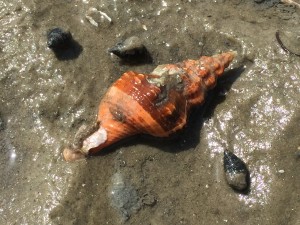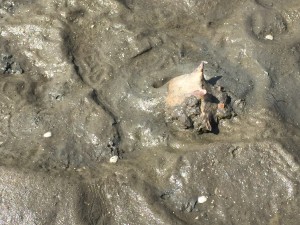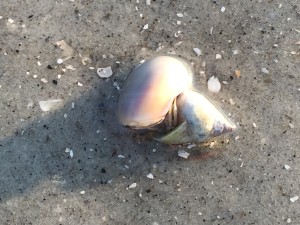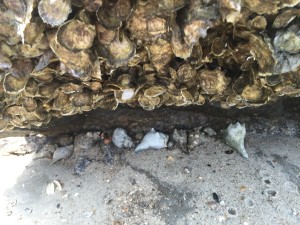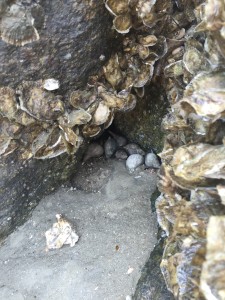This crab does not have a hard shell like the others, only its claws and head are calcified, so it seeks shelter in the empty shells of marine snails, moving to larger shells as it grows. The Hermit’s last two pair of legs are modified to hold onto the borrowed shell, holding so tight that it will be pulled apart if forcibly remove it from the shell. If threatened, the Hermit Crab retracts into the shell, closing off the opening with its hard claws. One claw (the right) is larger, but unlike the Fiddler Crabs, this trait is shared by both males and females.
Hermit Crabs live in shallow, protected waters. The marine Hermits found on Hilton Head are different than the land based Hermits sold in pet stores, and cannot survive out of the water for long periods.A walk around Mitchelville Beach or around the heel at low tide may reveals dozens of beautiful shells, but more often than not, these shells have a Hermit lurking inside.
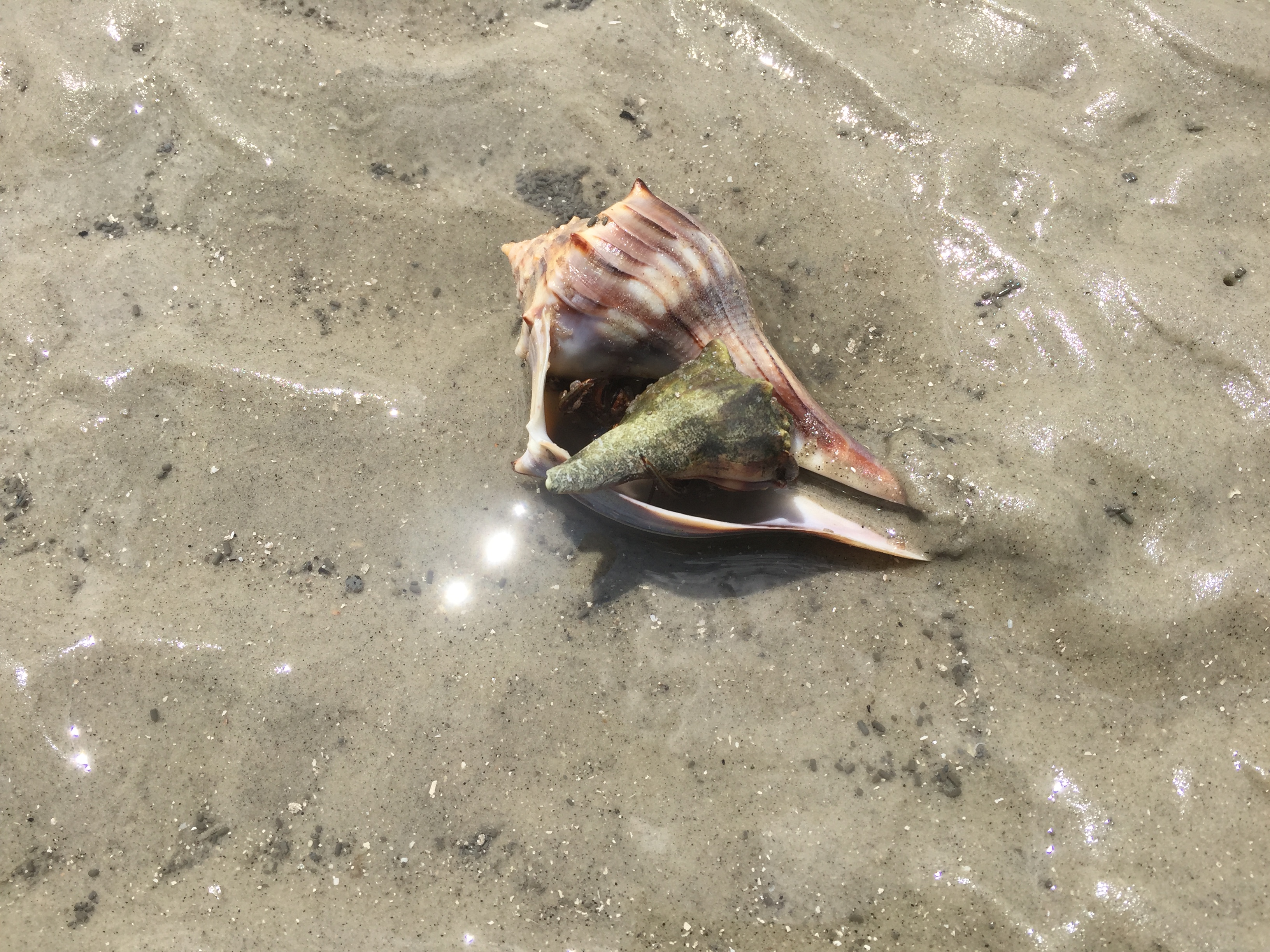
When it is time to reproduce, the male and female come partially out of their shells and the male deposits a spermatophore (a capsule containing sperm), fertilizing thousands of eggs along the female’s abdomen. She carries the eggs for a month or so before hatching the eggs in the ocean. These undeveloped Hermit Crabs, called zoeae, live amongst the zooplankton as they go through several stages of development, lasting a month or two. When the immature crab reaches a stage called megalopae (it looks sorta like a tiny lobster), it finds it’s first (itty bitty) mollusk shell and starts to spend time on land. After another month or so it buries itself in the sand to molt, emerging as a full-fledged, albeit very small Hermit Crab ready to begin the endless search for larger shells as it grows.
- Look! A beautiful Horse Conch shell, a rare find on the island.
- But alas, someone found it before I.
- A Knobbed Whelk shell buried in the mud may be empty, may still have the whelk, or contain a Hermit Crab. I have found all three.
- More often than not, it will contain a Hermit Crab. This is the Thinstripe Hermit, the most common that I have seen.
- Hermit Crabs are mainly scavengers, eating dead animals and debris. However, they will sometimes eat small live animals, including a smaller Hermit if caught outside its shell.
- Unknown if this Hermit was lunching on the Moonsail, or simply evicting it because it fancied the shell. But it wouldn’t let go, not even after flipping it over.
- An exceptionally large Thinstripe Hermit.
- A colony of Hermits waiting out the tide hiding in the rocks of a jetty.
- I actually heard them before I saw them. I thought it was the sound of water lapping at the rocks, except there was no water as the tide was out.

